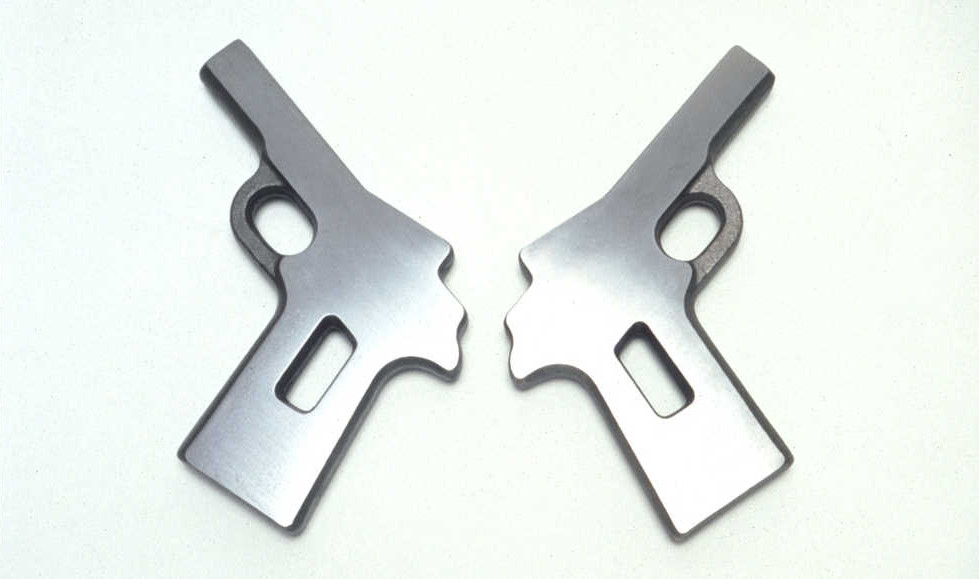
During a visit to the Colt firearms factory in Connecticut in 1995, English sculptor Cornelia Parker was captivated by the recognizably gun-shaped casts of metal produced early in the manufacturing process. As blank casts they had none of the capacities of working weapons, but “in one further step, a hole drilled, a surface filed, they would technically become firearms.”
Fascinated by this transition, “I asked the foreman if I could possibly have a pair of guns at this early stage in the production, and if he could give them the same finish that they’d get at the end of the process,” she wrote later. “Amazingly, he agreed, and they became Embryo Firearms, conflating the idea of birth and death in the same object.”
Ironically, as she was leaving America, customs officials discovered the casts in her luggage and “an argument ensued that perfectly reflected the questions raised by Parker’s work,” writes Jessica Morgan in Cornelia Parker (2000). “The American Customs department insisted that Embryo Guns were weapons, while the police department, in Parker’s defense, argued that they were harmless metal forms and Parker was released from questioning.”
